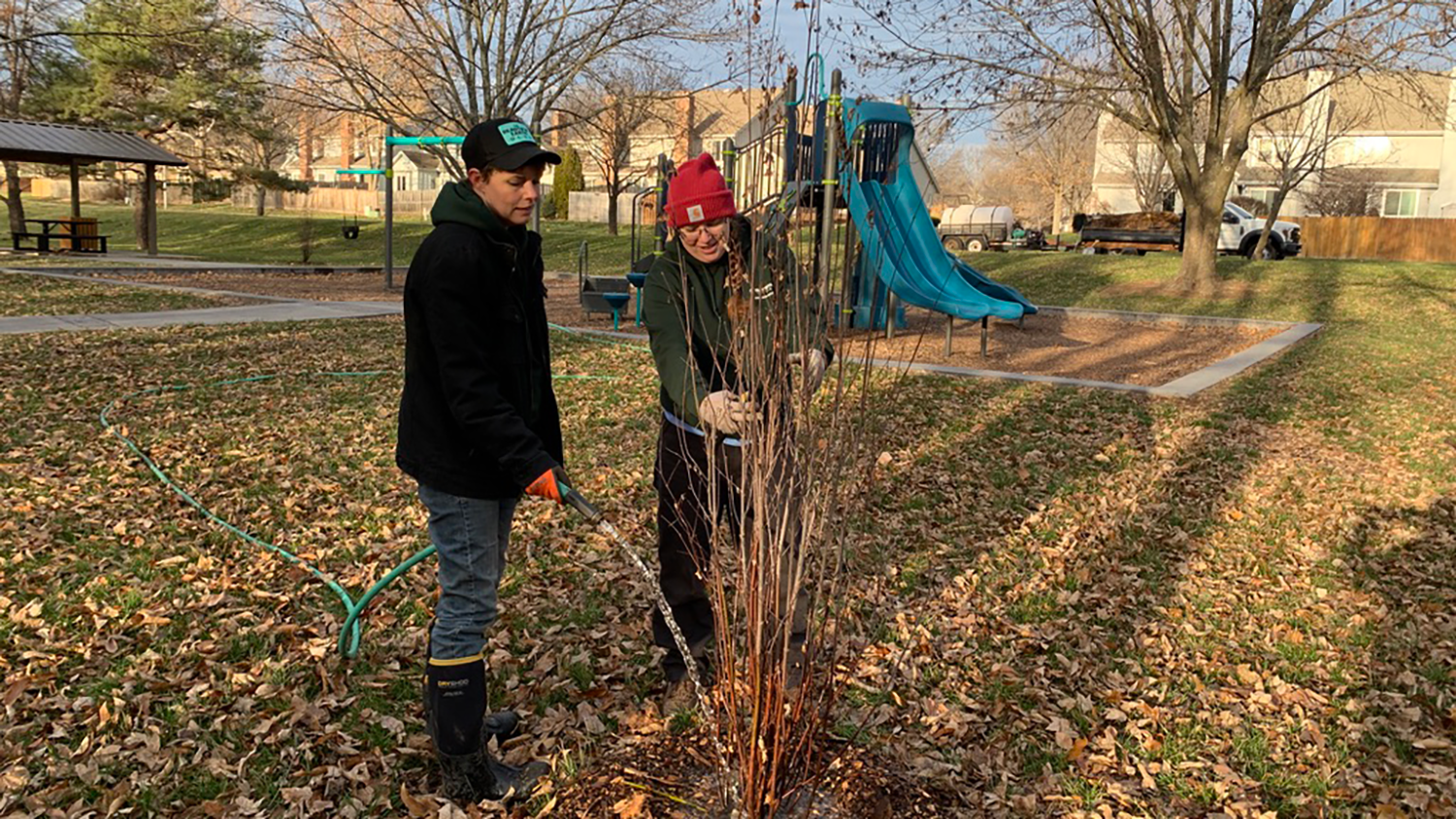
The City of Overland Park has embarked on a green initiative, thanks to a grant from the U.S. Forest Service and Kansas Forest Service. The goal: to plant 300 trees over seven planting seasons, not just as a replacement for the ash tree canopy, but to ensure greater access to trees, especially in low-income and older neighborhoods in Overland Park where tree canopies have been most affected.
As the seasons change, so does the work behind the scenes, and we caught up with some of the City’s forestry and horticulture staff at Cross Creek Park to get an insider’s perspective.
Bailey Patterson, City Forester, shared insights into their recent endeavors. “We spent a good part of the spring planting new trees in our parks to replace the lost ash tree canopy. Choosing the right trees to plant is crucial, and climate adaptability played a key factor in our choices.”
The new additions to Cross Creek Park include diverse and resilient species like Kentucky coffeetree, katsura, tulip poplar and American beech. While the ash trees at Cross Creek Park are currently healthy and treated, the new trees will continue to grow and eventually be able to replace the ash trees should they succumb to the emerald ash borer, an invasive beetle that feeds specifically on ash species.
Part of the grant mandates the responsible maintenance of the trees for the first three years after planting. Bailey highlighted staff’s efforts, saying, “We’re currently mulching, watering, pruning and removing stakes of the trees we have planted so far.”
Senior Horticulture Specialist Abbey Lueth added, “Winter watering is especially crucial in December, one of the driest months, to ensure the root system survives. We water slowly and with enough water, 10 gallons for every inch of tree diameter, to infiltrate the ground. A good rule of thumb is to water every other week during dormancy.”
Horticulture Specialist Diana Par-Due also stressed the importance of mulching explaining, “The majority of tree roots are six-24 inches below the surface, spreading wider than the canopy. Proper mulching is vital in preventing water loss and promoting fibrous root growth. Incorrect mulching, especially against the trunk, can be detrimental to the tree as it hinders oxygen exchange and may foster pests and disease.”
In addition to their tree-focused efforts, the team at Cross Creek Park recently updated the park sign area with plants that deer and other animals don’t like to eat, showcasing their dedication to creating a sustainable and thriving green environment.
The City’s commitment to increase, preserve and enhance its tree canopy is exemplified by the Legacy of Greenery Committee, which develops strategies to promote, plant and maintain trees and shrubs in Overland Park.
Wondering what you should be doing to take care of your trees this winter?
- Winter watering is crucial for plants and trees, especially evergreens, to prevent winter burn or death. Do so when daytime temperatures are above 40 degrees.
- Provide 10 gallons of water for every diameter inch of the tree, and do so every-other-week during the dormant season.
- Apply a fresh layer of mulch around trees, plants and shrubs to retain moisture and maintain soil temperature. Avoid piling mulch like a volcano against tree trunks.
- Prune trees during dormancy before new spring growth begins. The absence of leaves makes it easier to identify and remove damaged branches.
- Remove heavy snow from evergreens to prevent structural issues. Shake off bending branches to avoid breakage. If the tree looks sound, however, snow can serve as insulation against the cold.
